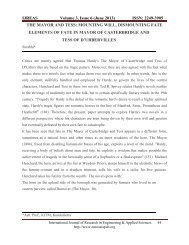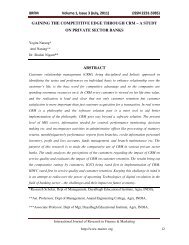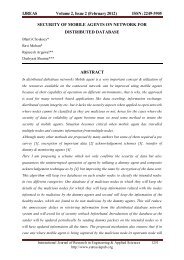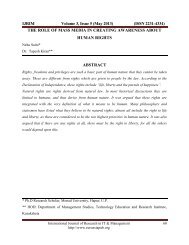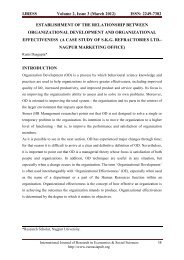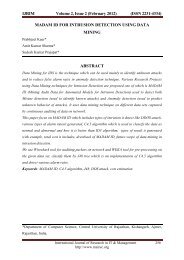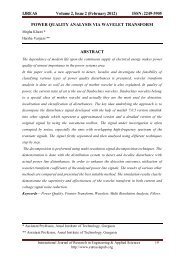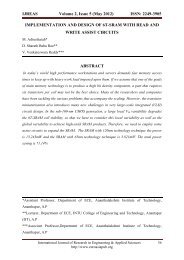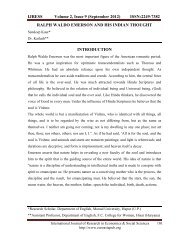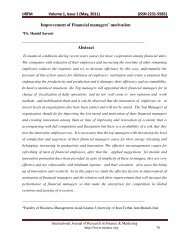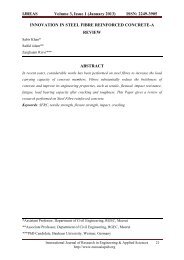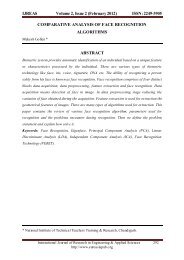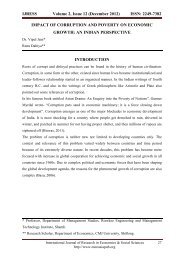shakespeare's sonnets - a critical analysis - Euroasiapub.org
shakespeare's sonnets - a critical analysis - Euroasiapub.org
shakespeare's sonnets - a critical analysis - Euroasiapub.org
Create successful ePaper yourself
Turn your PDF publications into a flip-book with our unique Google optimized e-Paper software.
IJRESS Volume 2, Issue 9 (September 2012) ISSN: 2249-7382<br />
SONNET 146<br />
EXPLICATION OF SONNET 146<br />
• First quatrain: The poem is an internal monologue, essentially the poet's persona speaking<br />
to him. The speaker addresses his “soul,” comparing the soul to someone who languishes<br />
and pines away within a big house while going to great expense to make the house look<br />
beautiful and happy on the outside.<br />
• The second quatrain: The house metaphor is expanded. Why, the soul is asked, does it<br />
invest so much in things of the temporal world - the fading mansion - when life is short<br />
and things of the world are temporary, ephemeral Just at the end of the quatrain, the poet<br />
jumps out of the mansion metaphor to drive home the point that the body came from the<br />
earth and will return to the earth, with the help of the worms.<br />
• Third quatrain: Here, at the point where the sonnet form generally turns, the soul is<br />
exhorted to invest within, not without: to trade the false, costly facades of the world for<br />
the inner “divine” values that will not fade with time. Let the outside wither (“pine”)<br />
so that the inner soul can prosper.<br />
• Closing couplet: The feeding metaphor from the 3rd quatrain is continued and expanded.<br />
The couplet finishes the metaphor from the 1st quatrain of the starving person within the<br />
mansion. The ironic juxtaposition of death that feeds on men, being fed on, and further<br />
Death itself being dead is typical Shakespearean irony. So too is the use, in two lines, of<br />
the words “death” (twice), “dead” and “dying,” when the final image points to eternal<br />
life.<br />
SONNET 146 AS PROOF OF SHAKESPEARE'S RELIGION<br />
Many readers view Sonnet 146 as proof of Shakespeare's religious fervor. The poem sets up a<br />
body/soul dichotomy. Several words within the poem are religiously loaded “soul” and “sinful”<br />
in the first line, “divine” in the 3rd quatrain. Further, the entire concept of abandoning the things<br />
of the world for the “greater” goal of eternal life - the crux of the poem's argument - is distinctly<br />
religious. Such sentiment would have been typical of much poetry of the time.<br />
However, several arguments can be made against this reading of Sonnet 146:<br />
In very few places in the rest of Shakespeare do we find any unequivocally religious overtones He<br />
often is dark and brooding think Hamlet, Lear, Mac Beth and it is often due to reflections upon the<br />
transience of youth and the temporality of life, yet he seldom turns to the afterlife for consolation.<br />
International Journal of Research in Economics & Social Sciences 71<br />
http://www.euroasiapub.<strong>org</strong>



